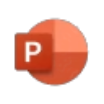
Microsoft PowerPoint: A Comprehensive Overview
Microsoft PowerPoint is one of the most widely recognized presentation software tools in the world, developed by Microsoft as part of its Microsoft Office suite. Since its launch, it has become the standard tool for creating visual presentations used in education, business, training, marketing, and many other fields. Its purpose is to allow users to communicate ideas effectively through slides that combine text, images, graphics, animations, and multimedia elements. PowerPoint is not just a tool for presenting information but also a creative platform for storytelling and knowledge sharing.
The applications and uses of Microsoft PowerPoint are extensive and adaptable across different industries and personal needs. Some of its key functions and benefits include the following:
It allows users to create slide-based presentations with customizable layouts, fonts, and colors, giving complete control over the appearance of content.
It supports the insertion of images, charts, tables, and SmartArt, making it easier to illustrate complex data in a visually appealing way.
It includes a wide range of design templates and themes, enabling users to build professional-looking presentations quickly without needing advanced design skills.
It provides animation and transition features, which bring movement and flow to presentations, helping to maintain audience engagement.
It allows embedding of audio, video, and other multimedia files, making it suitable for dynamic storytelling and interactive sessions.
It offers collaborative features when connected to Microsoft 365, enabling multiple users to edit the same presentation in real-time and leave comments for feedback.
It integrates seamlessly with other Microsoft applications such as Word, Excel, and Outlook, allowing charts, graphs, and content to be transferred into slides with ease.
It provides Presenter View, a feature that helps the presenter see notes, upcoming slides, and time management tools, while the audience only sees the main presentation.
It is widely used for professional training, workshops, and classroom teaching, offering visual support that enhances learning and understanding.
It is adaptable beyond formal presentations. Many people use PowerPoint for designing posters, reports, storyboards, and even simple videos due to its flexible design capabilities.
In terms of cost, Microsoft PowerPoint is not entirely free. It is typically included in the Microsoft Office suite, now known as Microsoft 365, which requires a subscription. However, Microsoft offers limited free access to PowerPoint through the web version, available via Office.com, which provides core features but lacks some advanced tools. For full functionality, including offline access, premium templates, and advanced collaboration features, a Microsoft 365 subscription is necessary.
When comparing PowerPoint with alternative tools, it stands out for its depth of features and universal adoption. Google Slides, for example, is free and cloud-based, offering easy collaboration, but it lacks the advanced design, customization, and offline capabilities that PowerPoint provides. Apple’s Keynote offers elegant design features and smooth animations but is limited to Apple’s ecosystem and not as universally compatible as PowerPoint. Open-source tools such as LibreOffice Impress are available at no cost but cannot match PowerPoint’s polish, templates, and seamless integration with other Microsoft applications.
Microsoft’s broader strategy with PowerPoint has been to integrate it deeply into Microsoft 365, ensuring it becomes not only a standalone application but also part of a larger productivity system. By connecting PowerPoint with Teams, OneDrive, and SharePoint, Microsoft ensures users can collaborate, share, and access presentations anywhere. This reflects Microsoft’s goal of making PowerPoint a global standard for communication, accessible both online and offline.
Conclusion
Microsoft PowerPoint remains the leading presentation software worldwide, offering unmatched versatility, integration, and professional design tools. It is not fully free but is accessible through Microsoft 365, with limited free versions available online. Its applications go beyond business presentations, extending into education, creative design, and communication. Compared with alternatives, PowerPoint holds a unique advantage in terms of feature depth, global compatibility, and integration with Microsoft’s ecosystem. For individuals and organizations seeking a reliable, flexible, and professional tool for visual communication, PowerPoint continues to be one of the most powerful and trusted solutions available.












